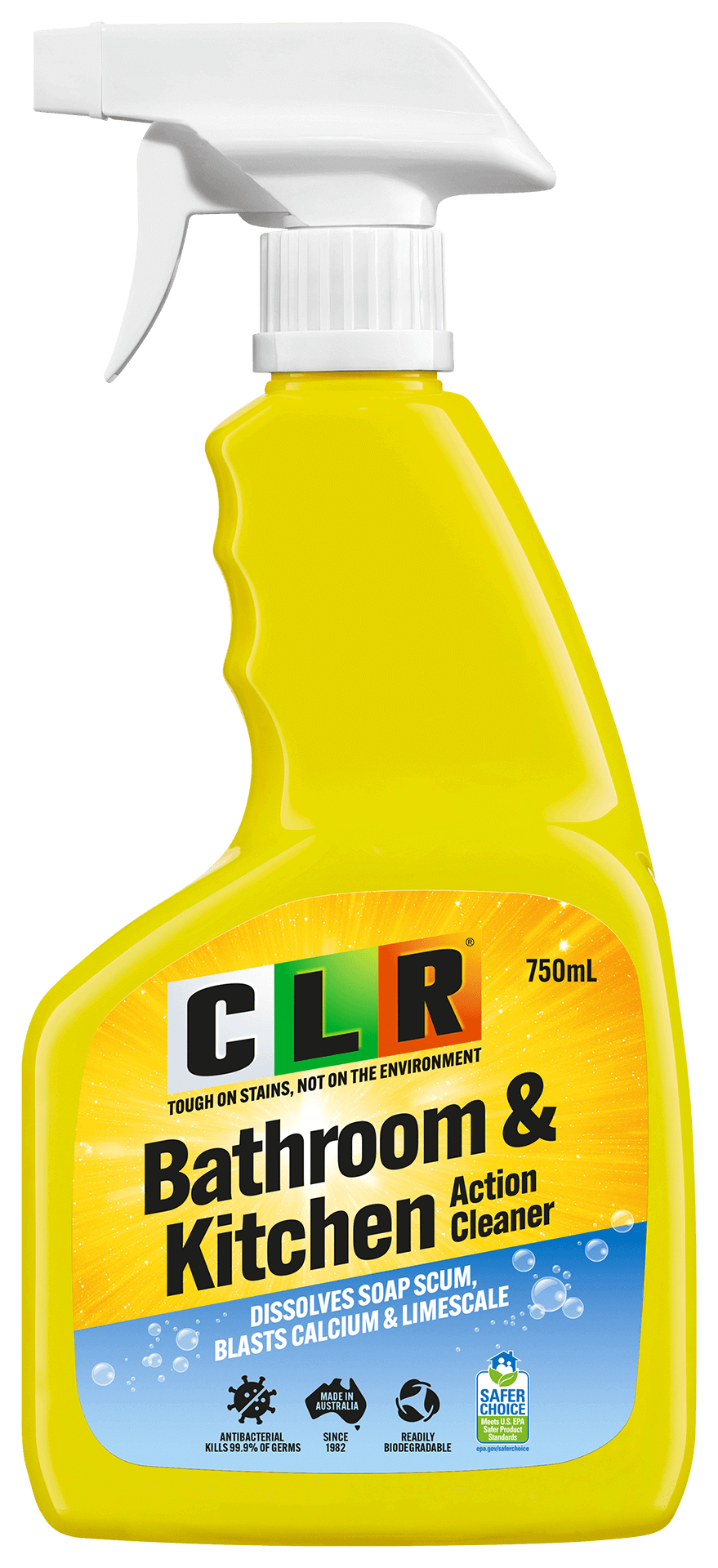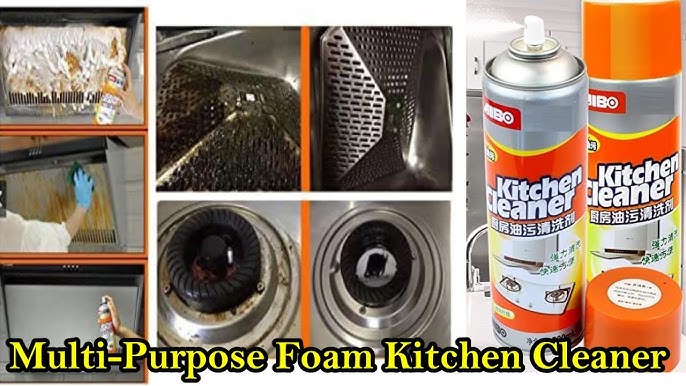Is your kitchen looking a bit more like a science experiment than a place where you prepare meals? If so, you’re not alone.
Kitchens can easily become a mess with spills, splatters, and stubborn stains. But fear not, the right kitchen cleaner can transform your cooking space back into a sparkling sanctuary. Imagine walking into your kitchen and being greeted by gleaming countertops and a fresh scent in the air.
Sounds inviting, right? In this guide, you’ll discover the secrets to using kitchen cleaner effectively, making your cleaning routine not just easy, but almost enjoyable. Let’s dive into how you can make your kitchen the heart of your home again, without the hassle or frustration. Stick around, and you’ll never look at cleaning the same way again!

Credit: clrclean.com.au
Choosing The Right Kitchen Cleaner
Choosing the right kitchen cleaner is crucial for a spotless kitchen. It helps maintain hygiene and keeps surfaces gleaming. With numerous options available, picking the best cleaner can be overwhelming. Understanding different types and knowing what suits your needs is essential. Let’s dive into the factors to consider when selecting a kitchen cleaner.
Types Of Cleaners
Kitchen cleaners come in various forms. Sprays are popular for quick application on counters and stoves. Liquids work well for deep cleaning and removing stubborn grime. Powders are ideal for scrubbing sinks and tiles. Each type has its advantages. Choose based on the surface you need to clean.
Natural Vs. Chemical Options
Natural cleaners are gentle and eco-friendly. They often contain ingredients like vinegar, baking soda, and lemon juice. Chemical cleaners offer stronger cleaning power. They tackle tough stains and disinfect surfaces effectively. Consider your priorities. Do you prefer a green option or a powerful cleaner?
Reading Labels
Labels provide vital information. Check for active ingredients and their concentration. Look for warnings about skin irritation or harmful fumes. Some cleaners have specific instructions for use. Following these ensures maximum effectiveness and safety. Always read labels carefully to make informed choices.

Credit: www.apartmenttherapy.com
Preparing Your Kitchen For Cleaning
Getting ready to clean your kitchen is the first step to success. A well-prepared space makes cleaning easier and faster. Proper preparation reduces stress and ensures effective cleaning. Below are essential steps to prepare your kitchen for cleaning.
Clearing The Area
Start by removing all items from countertops and tables. This includes appliances, dishes, and decorative items. Clear the sink by washing or storing dirty dishes. Move furniture, like chairs, to create more space for cleaning. Open windows for ventilation, allowing fresh air to circulate.
Gathering Supplies
Collect all necessary cleaning supplies before starting. Grab a good-quality kitchen cleaner. You will need sponges, cloths, and scrub brushes. Don’t forget a bucket for soapy water. Keep gloves handy to protect your hands. Check for a mop and vacuum if needed.
Safety Precautions
Ensure safety by wearing gloves and protective eyewear. Keep cleaning products away from children and pets. Avoid mixing different cleaners to prevent harmful reactions. Read instructions on each product label. Make sure the area is well-ventilated to avoid inhaling fumes.
Effective Cleaning Techniques
Using kitchen cleaner effectively can transform your cooking space into a sparkling haven. But what’s the secret sauce? It’s all about the techniques you use. Let’s dive into some practical ways to make your kitchen shine.
Spot Cleaning Stains
Stains can be stubborn, but with the right approach, they’re no match for you. Identify the type of stain first. Is it greasy, sticky, or just plain mysterious? A quick spray of kitchen cleaner and a soft cloth can often do the trick.
Consider the surface material. Is it marble, granite, or laminate? Each requires a different touch. For granite countertops, a gentle cleanser is ideal to avoid scratches. Be mindful of how much pressure you apply; the goal is to lift the stain, not damage the surface.
Ever spill red wine on a white counter? A little baking soda mixed with kitchen cleaner can be your best friend. Let it sit for a few minutes before wiping it away. What’s your go-to method for tricky stains?
Deep Cleaning Strategies
When was the last time you cleaned under your fridge? Deep cleaning isn’t just about making things look nice; it’s about hygiene. Start with areas you usually overlook like behind appliances and inside cabinets.
Use a cleaner that tackles both grease and germs. Spray it generously on surfaces and let it sit to break down dirt. While it works its magic, tackle other tasks like reorganizing your pantry or wiping down shelves.
Ever found a lost spice jar from years ago? A deep clean often reveals hidden treasures—and expired items that need tossing. How often do you really clean those nooks and crannies?
Avoiding Common Mistakes
Have you ever sprayed cleaner directly onto a hot stove? Mistake number one! Always let surfaces cool before cleaning to avoid damage. Another common slip-up is using too much product; more isn’t always better.
Read the label on your cleaner. Some contain chemicals that aren’t suitable for certain surfaces. Mixing different cleaners can also be a recipe for disaster. It’s crucial to use them as intended.
Skipping the rinse step can leave residue that attracts more dirt. Have you checked the instructions thoroughly? What’s one mistake you’ve made that you’ll never repeat?
Effective cleaning techniques are about using your cleaner wisely. Through spot cleaning, deep cleaning, and avoiding mistakes, your kitchen can achieve a new level of cleanliness. What techniques do you swear by?
Cleaning Specific Kitchen Surfaces
Cleaning specific kitchen surfaces can be a game-changer in maintaining a sparkling kitchen. Different surfaces require different cleaning techniques, and knowing these can save you time and effort. Let’s break it down into manageable parts so you can tackle each area with confidence.
Countertops
Countertops are where most of the action happens in your kitchen. Start by removing any items and wiping the surface with a damp cloth to remove loose debris. Use a kitchen cleaner suitable for your countertop material; for example, granite or marble needs a pH-neutral cleaner to prevent damage.
Spray the cleaner evenly and let it sit for a few minutes. This allows the cleaner to break down stains and grime. Wipe with a microfiber cloth in a circular motion for a streak-free finish. Do you notice a new shine or a fresh scent? That’s your reward for using the right cleaner!
Appliances
Your appliances work hard, so they deserve some TLC. For stainless steel surfaces, apply a cleaner specifically made for them to avoid scratches. Wipe along the grain to maintain the surface’s integrity.
For the inside of appliances like ovens or microwaves, a mixture of vinegar and water can tackle tough stains. Spray and let it sit, then wipe away for a gleaming result. Have you ever been amazed at how a clean microwave can change the whole look of your kitchen?
Floors
Kitchen floors see a lot of foot traffic and spills. Sweep or vacuum first to remove loose dirt. For tiled floors, a mop with a cleaner designed for tiles can make them shine.
If you have wooden floors, ensure you’re using a wood-safe cleaner. Excessive water can warp wood, so use a lightly damp mop. Notice how a clean floor brightens your kitchen space?
Cabinets
Cabinets often harbor grease and fingerprints. Use a gentle cleaner that won’t strip the finish. Spray it onto a cloth, not directly onto the cabinet, to avoid excess moisture.
Wipe from top to bottom to prevent streaks. Pay attention to handles and edges, where grime tends to accumulate. Isn’t it satisfying to see your cabinet doors free of smudges?
By focusing on these specific areas, you can transform your kitchen into a clean and inviting space. Which surface will you tackle first on your next cleaning day?
Maintaining A Clean Kitchen
To keep a kitchen spotless, grab a kitchen cleaner and spray the surfaces. Wipe it with a clean cloth for a shiny finish. Use regularly for hygienic cooking space.
Keeping your kitchen clean is more than just about appearances; it’s about creating a space that promotes health and comfort. A clean kitchen can prevent foodborne illnesses and make your cooking experience more enjoyable. But how do you maintain a spotless kitchen without feeling overwhelmed? Let’s break it down with some practical strategies.Daily Cleaning Habits
Establishing daily cleaning habits is key to maintaining a clean kitchen. Start by wiping down your countertops after every meal preparation. This simple act prevents bacteria build-up and keeps your kitchen looking fresh. Don’t forget to sweep the floor every evening. It might seem trivial, but daily sweeping prevents dirt and crumbs from accumulating. Also, wash your dishes right after meals to avoid a daunting pile-up. These small habits, when done consistently, can make a significant difference. Have you noticed how a clean kitchen boosts your mood and productivity?Weekly Deep Clean Schedule
Once a week, dedicate some time to a more thorough cleaning session. Focus on areas that are often overlooked during daily cleaning. Clean your refrigerator shelves and toss any expired items. This not only keeps your fridge organized but also ensures food safety. Wipe down your cabinet doors and clean your stove thoroughly. These areas can accumulate grime over time, which daily cleaning might miss. And don’t forget your sink; a mixture of baking soda and vinegar can work wonders on stubborn stains. Having a weekly schedule helps you manage these tasks without feeling overwhelmed. What’s your go-to day for a deep kitchen clean?Long-term Maintenance Tips
Think about long-term maintenance as an investment in your kitchen’s longevity. Regularly check for leaks under your sink and around appliances. Addressing minor issues promptly can prevent bigger problems down the road. Consider organizing your pantry every few months. Group similar items together and label containers. This not only makes cooking easier but also reduces waste by keeping track of what you have. Every so often, take a moment to assess your cleaning supplies. Are your products effective and safe? Swapping out old or ineffective products can enhance your cleaning routine. Maintaining a clean kitchen is a continuous effort. How do you ensure your kitchen stays in top shape over time?Environmental Considerations
Maintaining a clean kitchen is essential for health and safety. But cleaning shouldn’t harm the environment. Choosing eco-friendly methods is both responsible and rewarding. This section explores how to use kitchen cleaners with environmental awareness.
Eco-friendly Products
Opt for cleaners labeled as eco-friendly. They are often biodegradable and non-toxic. These products break down easily in nature. They pose less risk to our planet. Ingredients are sourced from natural materials, avoiding harmful chemicals. Check labels for certifications like “Green Seal” or “EcoLogo”. They indicate genuine eco-friendly standards.
Reducing Waste
Use refillable containers to minimize plastic waste. Buy kitchen cleaners in bulk to reduce packaging. Choose concentrated formulas. They require less packaging and last longer. Make your own cleaners using items like vinegar and baking soda. This cuts down waste and is cost-effective. Consider reusable cleaning cloths instead of disposable wipes. They are washable and reduce landfill waste.
Recycling And Disposal
Proper disposal of cleaning products is crucial. Do not pour them down the drain unless specified. Many chemicals can harm water sources. Check local guidelines for recycling cleaner bottles. Rinse them thoroughly before recycling. Some brands offer take-back programs for empty containers. Participate in these programs to ensure safe disposal. Avoid mixing different cleaners. It can produce harmful gases or reactions.
Expert Tips For Optimal Results
Keeping your kitchen sparkling clean not only brings joy but also ensures a healthy environment. You might wonder how you can achieve optimal results with your kitchen cleaner. Here are some expert tips that will make your cleaning routine more efficient and effective. Dive into proven cleaning hacks, learn time-saving techniques, and discover methods for handling those stubborn stains with ease. Ready to transform your kitchen cleaning experience?
Proven Cleaning Hacks
Did you know that using a microfiber cloth can enhance the effectiveness of your kitchen cleaner? It picks up dirt and grime effortlessly, leaving surfaces spotless. Spraying the cleaner directly onto the cloth rather than the surface can prevent over-saturation and streaks.
Another handy hack is using warm water. It helps break down grease and grime faster, allowing your cleaner to work more effectively. Have you ever tried using a toothbrush for hard-to-reach areas? It’s perfect for scrubbing around faucets and sink edges.
Time-saving Techniques
Set a timer for each task. You’d be surprised how much you can accomplish in five-minute cleaning sprints. Focus on one area of your kitchen at a time, ensuring thorough cleaning without feeling overwhelmed.
Use a multi-surface cleaner. This can save you time switching between products, allowing you to clean counters, appliances, and even cabinets with a single solution. Remember, efficiency is key to saving time.
Handling Tough Stains
Stubborn stains require a bit more attention. Let your kitchen cleaner sit on the stain for a few minutes before wiping it away. This gives the cleaner time to break down the stain’s particles, making it easier to remove.
Baking soda can be a game-changer for tough stains. Mix it with your cleaner to form a paste and apply it to the stain. Use a gentle scrubbing motion for best results. Have you ever tried this combo on your stovetop? It works wonders.
What’s your go-to method for dealing with difficult stains? Trying different techniques can help you find what works best for your kitchen’s unique challenges. Keep experimenting until you find your perfect cleaning routine.

Credit: www.youtube.com
Frequently Asked Questions
What Surfaces Can Kitchen Cleaner Be Used On?
Kitchen cleaner is versatile and safe for most surfaces. You can use it on countertops, stovetops, sinks, tiles, and appliances. Always check the label for specific surface compatibility. For delicate materials like marble, use a cleaner designed for those surfaces to avoid damage.
How Often Should I Clean My Kitchen?
Cleaning frequency depends on usage. Daily cleaning is ideal for high-touch areas like countertops and sinks. For appliances and floors, weekly cleaning is sufficient. Regular maintenance prevents buildup and keeps your kitchen hygienic. Adjust frequency based on your cooking habits and family size.
Is Kitchen Cleaner Safe For Food Surfaces?
Most kitchen cleaners are safe for food-contact surfaces. Ensure the cleaner is food-safe by checking the label. After cleaning, wipe surfaces with water to remove any residues. Always follow manufacturer instructions for safe usage. Choosing eco-friendly cleaners can further ensure safety.
Can Kitchen Cleaner Remove Tough Stains?
Kitchen cleaner can effectively remove many tough stains. For stubborn stains, let the cleaner sit for a few minutes before scrubbing. Repeat if necessary for full removal. For specific stains like grease, use a cleaner designed to target grease for optimal results.
Conclusion
Cleaning the kitchen becomes easy with the right cleaner. Follow the steps shared here. Enjoy a sparkling and fresh kitchen. A cleaner kitchen means healthier meals for you. Always read labels before using any product. Check for suitable surfaces. Safety first.
Keep pets and kids away while cleaning. Small efforts lead to big results. Keep up with regular cleaning for best outcomes. Feel the difference in your cooking space. A clean kitchen boosts your mood. It’s worth the time spent. Happy cleaning!

As the chief content writer, Hassan Al Sarker works as a professional kitchen-based content creator at Kitchen Liker.
In addition to reviewing the content published on Kitchen Liker, he ensures that it is accurate, relevant, and helpful. As a result, all the reviews and information published at Kitchen Liker are neutral and userfriendly.
Hassan Al Sarker has a bachelor’s degree in Hotel and Tourism Management From the Newyork University. Before joining Kitchen Liker, he was a contributor at Kitchen Club, United States.

